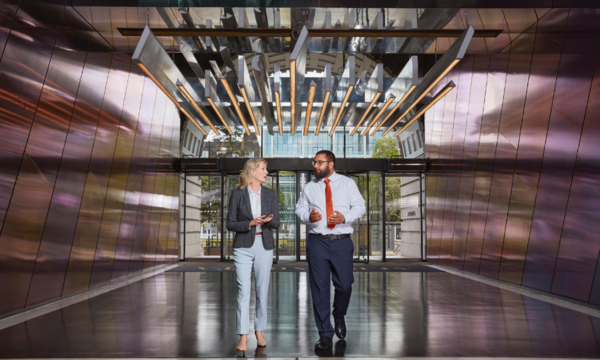 Written by:
Written by:
John Jackson
Industry Editor
At the back of my house there are lots of trees, both in the garden and beyond. On a daily basis I don’t just get to see these trees but also all the nature they attract, including a significant amount of birdlife.
In summer the leaf cover gives part of the garden a much appreciated cooling deep shade, and my plum tree with branches that overhang the fence has become a popular stopping off point for walkers to take advantage of this free source of fruit. Last year, I was particularly impressed when a couple found the front of my house to knock on the door and ask if it would be OK for them to pick some of the plums. Nature really does bring out the best in people.
I know in this respect I’m fortunate, although please don’t think I live in a countryside idyll. Instead, I live in a twenty two year old edge of town home on a small development, and at the front of my house the contrast couldn’t be more different. Many of the front gardens have been paved over to create more parking space, the narrow twisting roads quickly clog up with parked cars, and as such there’s far too high a volume of hard surfaces. Thankfully, there are some well tended front gardens, along with some nicely maturing shrubs and trees. Although it does make me think just how much better it would be if communal car parking had been placed at the entrance to the development. Instead of roads and driveways we’d be opening our front doors onto a natural habitat that would feel like living in a rural idyll even in an urban location.
For me it's this stark contrast between having a naturally beautiful outlook from the rear of my home, and the hard surfaced environment that sits on the other side of my front door that truly illustrates the benefits of nature in the built environment. My thinking isn’t unique and even pre-Covid19 harnessing nature was already being embraced as a means to help create more sustainable living environments that also support wellbeing. In Wales there are an increasing number of examples where this is already happening, including Sero Homes’, Parc Hadau development in Pontardawe that consists of 35 zero carbon homes designed by architects Loyn + Co. Hopefully creating zero carbon homes in natural settings that are a pleasure to live in will increasingly become the norm in our built environment.
Equally in our existing built environment there are opportunities to reintroduce nature, and transform neighbourhoods. For example, Greener Grangetown not only introduced a Sustainable Urban Drainage System (SUDS) it has also worked to create a more attractive environment for the community to enjoy. This article from Arup gives a detailed description of the project including images that help illustrate this natural transformation.
Heading into the core of the built environment, we are increasingly aware of the need to repurpose our towns and cities as they face a post pandemic future with fewer major retailers and a potential reduction in demand for office space. Here a genuine commitment to reintroducing nature has the potential to create locations where people want to spend more time enjoying. For example, in Nottingham there are proposals to replace the Broadmarsh shopping centre with wetlands, pocket woodlands and a wildflower meadow, all in the very heart of the City. This would result in very natural green space, differing significantly from the manicured parks traditionally associated with cities. Whilst in Paris there are plans to transform the Champs-Élysées into an ‘extraordinary garden‘ where space for vehicles will be reduced by 50% and new green areas and tree planting will be undertaken to improve air quality.
In suburbs, towns and cities the value of creating a more natural built environment is becoming increasingly apparent, and well executed has the potential to play an important role in helping to reduce our carbon footprint, improve personal wellbeing and create more attractive places for us all to enjoy. Ultimately the more nature we embed in our built environment the more we will all benefit.







